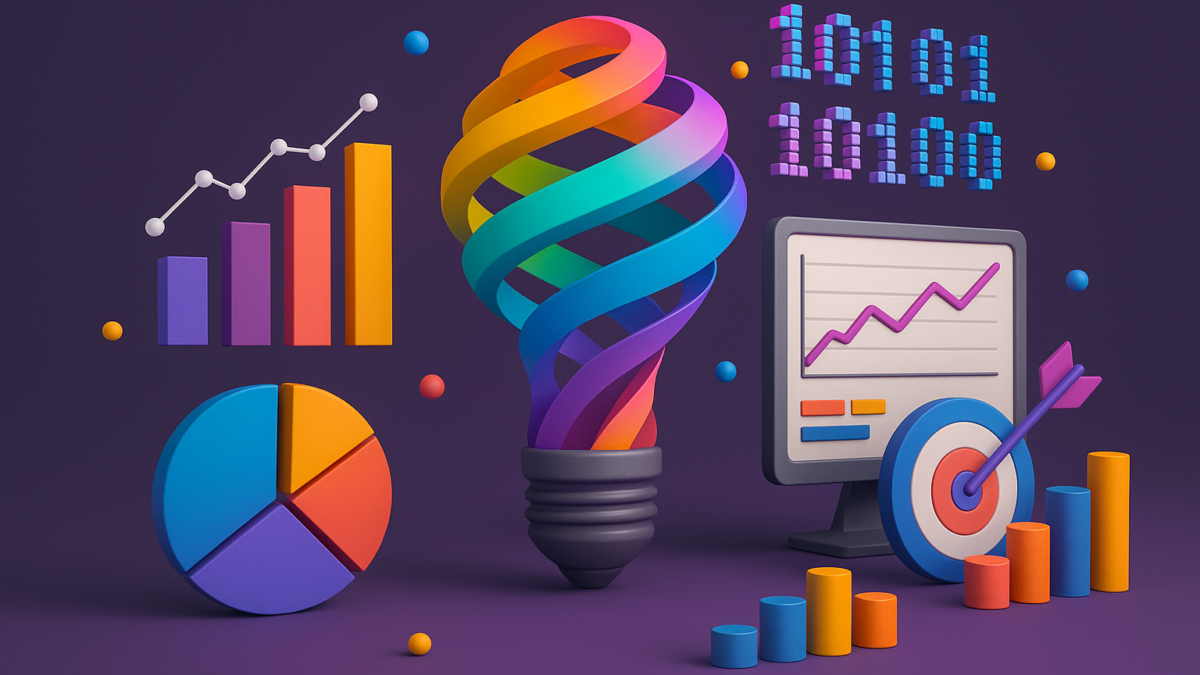Data-Driven Creativity: The New Frontier of Marketing Innovation
Marketing has always been a blend of art and science but in 2025, data has become the creative catalyst driving the next generation of campaigns. Gone are the days when creativity was powered solely by intuition. Today, data-driven creativity enables marketers to transform insights into emotionally resonant, high-performing campaigns that connect deeply with their audiences.
1. What Is Data-Driven Creativity?
Data-driven creativity is the practice of using data insights — from user behavior, sentiment analysis, and performance metrics — to shape creative direction, messaging, and design.
It doesn’t replace creativity; it enhances it.
By understanding what truly motivates customers, brands can create content that feels personal, relevant, and impactful — not just pretty visuals or catchy lines.
Example:
Netflix’s recommendation banners, Spotify’s “Wrapped,” and Nike’s personalized ads all showcase creativity guided by user data. These campaigns feel personal because they are built on real human behavior.
2. The Marriage of Analytics and Imagination
Data gives marketers clarity; creativity gives them connection. Together, they make marketing both smart and soulful.
Here’s how leading marketers use data to spark creativity:
- Audience insights: Identify what stories or visuals resonate with each segment.
- Predictive analytics: Anticipate what content will engage users next.
- A/B testing: Refine visuals, headlines, and CTAs to optimize performance.
- Emotion AI: Analyze how audiences emotionally respond to campaigns in real time.
When analytics meet imagination, marketing becomes a dynamic loop — every creative decision feeds data, and every data point inspires creativity.
3. Tools Powering Data-Driven Creativity
Modern Martech stacks are built around AI and automation tools that simplify creative decision-making.
Some key tools and technologies include:
- AI-based content generators (like ChatGPT and Jasper) for ideation and tone testing.
- Creative analytics platforms (such as VidMob or Pattern89) for real-time campaign optimization.
- Customer data platforms (CDPs) to unify insights across channels.
- Visual trend analysis tools for predicting design and aesthetic shifts.
These technologies ensure every creative output is backed by precision and performance data.
4. Why It Matters in 2025
Consumers are overwhelmed by digital noise — and only relevant, emotionally intelligent marketing cuts through.
Data-driven creativity allows brands to:
- Craft personalized storytelling at scale
- Maintain brand consistency across platforms
- Measure emotional impact and ROI simultaneously
- Foster collaboration between data analysts and creative teams
In short, it helps marketers deliver not just ads, but experiences that matter.
5. The Human Element: Creativity Still Reigns Supreme
While data informs decisions, human creativity remains irreplaceable.
The most successful campaigns in 2025 are those where:
- Data inspires the idea, not dictates it.
- AI augments creativity, not replaces it.
- Marketers blend intuition with intelligence to create genuine emotional connections.
Data without imagination is mechanical — imagination without data is a gamble.
The sweet spot lies in the middle.
Conclusion
Data-driven creativity marks a paradigm shift — where marketing isn’t just about what looks good, but what works best.
As technology evolves, brands that blend analytics with artistry will stand out as leaders of the new creative frontier.
Ready to fill your pipeline with qualified leads? Get started with iTMunch’s B2B lead generation services today.
Data-Driven Creativity: The New Frontier of Marketing Innovation





